Join More Than 50,000+ Subscribers and get latest camera news and rumors
NEW CAMERA VIDEOS ON YOUTUBE
Download Our Android App
|
By admin, on November 4th, 2021

Sony A7 IV vs Sony A7R III – We are comparing these two cameras since the price factor of both is up to some extent. So, let’s talk about the Major core differences between the two.
Keep in mind the specification we are using here is of the latest Sony A7R IIIA Camera.
Compared to its predecessor the a7R III, the most significant improvement of the a7R IIIA is the rear LCD resolution, which jumps from 1,440,000 to 2,359,296 dots. The USB port has also been upgraded from a USB 3.1 Gen 1 Type-C Port to a faster USB 3.2 Gen 1 Type-C Port. Beside these two improvements, the a7R III and a7R IIIA are equal in specifications and performance.
|
Sony A7 IV |
Sony A7R III |
| Lens Mount |
Sony E |
Sony E |
| Sensor Type |
35.9 x 23.9 mm (Full-Frame) CMOS |
35.9 x 24 mm (Full-Frame) CMOS |
| Sensor Resolution |
Actual: 34.1 Megapixel
Effective: 33 Megapixel |
Actual: 43.6 Megapixel
Effective: 42.4 Megapixel (7952 x 5304) |
| Crop Factor |
None |
None |
| Aspect Ratio |
1:1, 3:2, 4:3, 16:9 |
3:2, 16:9 |
| Image File Format |
JPEG, Raw, HEIF |
JPEG, Raw |
| Bit Depth |
14-Bit |
14-Bit |
| Image Stabilization |
Sensor-Shift, 5-Axis + Gyro Based IS |
Sensor-Shift, 5-Axis |
Image Quality:
Sony A7R III Features a BSI 42.4-megapixel Exmor R CMOS sensor that works with the BIONZ X image processor to offer high-resolution stills and video while minimizing noise and improving speed.
The newly developed 33MP Exmor R full-frame sensor features a back-illuminated design that promotes high clarity, low noise, and vivid color rendering. Paired up with a more advanced BIONZ XR Image processor.
ISO Rating
- 100 to 51200 (Extended: 50 to 204800
- 100 to 32000 (Extended: 50 to 102400)
Sony A7R III additional advantage: Pixel Shift Multi Shooting, this mode shifts the sensor while making four consecutive exposures in order to acquire approximately 169.6MP
Verdict (Image Processor): For Studio Shooters: Sony A7R III – features a super high-resolution sensor, but needs more light to deliver ultimate details compared to A7 IV. If you are a wedding photographer, casual style shooter or Hybrid shooter the Sony A7 IV is made for you.
|
Sony A7 IV |
Sony A7R III |
| ISO Sensitivity |
Auto, 100 to 51200 (Extended: 50 to 204800) |
Auto, 100 to 32000 (Extended: 50 to 102400) |
| Shutter Speed |
1/8000 to 30 Second
Bulb Mode |
1/8000 to 30 Seconds
1/8000 to 1/4 Second in Movie Mode
Bulb Mode |
| Metering Method |
Center-Weighted Average, Highlight Weighted, Multiple, Spot |
Center-Weighted Average, Highlight Weighted, Multi-Zone, Spot |
| Exposure Modes |
Aperture Priority, Manual, Program, Shutter Priority |
Aperture Priority, Auto, Manual, Program, Shutter Priority |
| Exposure Compensation |
-5 to +5 EV (1/3 EV Steps) |
-5 to +5 EV (1/3, 1/2 EV Steps) |
| Metering Range |
-3 to 20 EV |
-3 to 20 EV |
| White Balance |
Auto, Cloudy, Color Temperature, Color Temperature Filter, Custom, Daylight, Flash, Fluorescent (Cool White), Fluorescent (Day White), Fluorescent (Daylight), Fluorescent (Warm White), Incandescent, Shade, Underwater |
Auto, Cloudy, Color Temperature, Custom, Daylight, Flash, Fluorescent (Cool White), Fluorescent (Daylight), Fluorescent (Warm White), Incandescent, Shade, Underwater |
| Continuous Shooting |
Up to 10 fps at 33 MP for up to 828 Frames (Raw) / Unlimited Frames (JPEG) |
Up to 10 fps at 42.4 MP for up to 76 Frames (Raw) / 76 Frames (JPEG)
Up to 8 fps at 42.4 MP for up to 76 Frames (Raw) / 76 Frames (JPEG)
Up to 6 fps at 42.4 MP for up to 76 Frames (Raw) / 76 Frames (JPEG)
Up to 3 fps at 42.4 MP for up to 76 Frames (Raw) / 76 Frames (JPEG) |
| Interval Recording |
Yes |
2/5/10-Second Delay |
| Self-Timer |
2/5/10-Second Delay |
Autofocus
The New BIKONZ XR image processor features a new AF Algo for advanced tracking system. Let’s have a look at the screen coverage and number of AF points we are getting in both camera.
- A7 IV: 759 phase, 425 contrast Screen Coverage 94 %
- A7R III: 399 phase, 425 contrast Screen Coverage 68 %
Burst shooting
Both feature the same Burst Shooting Speed 10 FPS
- Sony A7 IV @ 10 FPS (33 MP) JPGs or Lossy Compressed RAW.
- Sony A7R III @ 10 FPS (42 MP) JPG or Uncompressed RAW
Buffer Size
- Sony A7 IV Can Record up to 1,000 files (JPGs, or lossless compressed RAW).
- Sony A7 III Can Record up to 76 JPGs, 76 RAW (compressed) or 30 RAW (uncompressed).
|
Sony A7 IV |
Sony A7R III |
| Focus Type |
Auto and Manual Focus |
Auto and Manual Focus |
| Focus Mode |
Continuous-Servo AF (C), Direct Manual Focus (DMF), Manual Focus (M), Single-Servo AF (S) |
Automatic (A), Continuous-Servo AF (C), Direct Manual Focus (DMF), Manual Focus (M), Single-Servo AF (S) |
| Autofocus Points |
Phase Detection: 759
Contrast Detection: 425 |
Phase Detection: 399
Contrast Detection: 425 |
| Autofocus Sensitivity |
-4 to +20 EV |
-2 to +20 EV |
Verdict (Autofocus): Sony A7 IV features a more advanced tracking system than the Sony A7R III camera. As well as more buffer, the best camera in-between these two is for sure the Sony A7 IV.
Faster Image Processor and Slower Speed, Why Sony?
Sony A7R III uses an older image processor Bionz X, despite that the A7R III camera is able to process a 42MP Sensor @ 10 FPS Uncompressed RAW. But, at the same time, the Sony A7 IV Camera uses a Bionz XR image processor with faster processing speed but the A7 IV speed is limited to 10FPS with lossless compressed RAW.
|
Sony A7 IV |
Sony A7R III
|
| Recording Modes |
H.265/XAVC HS 4:2:2 10-Bit
UHD 4K (3840 x 2160) at 23.976p/50p/59.94p [50 to 200 Mb/s]
H.265/XAVC HS 4:2:0 10-Bit
UHD 4K (3840 x 2160) at 23.976p/50p/59.94p [30 to 150 Mb/s]
H.264/XAVC S-I 4:2:2 10-Bit
UHD 4K (3840 x 2160) at 23.976p/25p/29.97p/50p/59.94p [240 to 600 Mb/s]
Full HD (1920 x 1080) at 23.976p/25p/29.97p/50p/59.94p [89 to 222 Mb/s]
XAVC S 4:2:2 10-Bit
UHD 4K (3840 x 2160) at 23.976p/25p/29.97p/50p/59.94p [100 to 200 Mb/s]
Full HD (1920 x 1080) at 23.976p/25p/29.97p/50p/59.94p [50 Mb/s]
XAVC S 4:2:0 8-Bit
UHD 4K (3840 x 2160) at 23.976p/25p/29.97p/50p/59.94p [60 to 150 Mb/s]
Full HD (1920 x 1080) at 23.976p/25p/29.97p/50p/59.94p/100p/119.88p [16 to 100 Mb/s] |
XAVC S
UHD 4K (3840 x 2160) at 23.976p/25p/29.97p [60 to 100 Mb/s]
Full HD (1920 x 1080) at 23.976p/25p/29.97p/50p/59.94p/100p/119.88p [100 Mb/s]
HD (1280 x 720) at 100p/119.88p [50 Mb/s]
AVCHD
Full HD (1920 x 1080) at 50p/59.94p [28 Mb/s]
Full HD (1920 x 1080) at 23.976p/25p/50i/59.94i [17 to 24 Mb/s]
MP4
Full HD (1920 x 1080) at 50p/59.94p [28 Mb/s]
Full HD (1920 x 1080) at 25p/29.97p [16 Mb/s]
HD (1280 x 720) at 25p/29.97p [6 Mb/s] |
| External Recording Modes |
4:2:2 10-Bit
UHD 4K (3840 x 2160) at 23.976p/25p/29.97p/50p/59.94p
Full HD (1920 x 1080) at 23.976p/50p/59.94p
Full HD (1920 x 1080) at 50i/59.94i
4:2:0 8-Bit
UHD 4K (3840 x 2160) at 23.976p/25p/29.97p/50p/59.94p
Full HD (1920 x 1080) at 23.976p/50p/59.94p
Full HD (1920 x 1080) at 50i/59.94i |
4:2:2 8-Bit
UHD 4K (3840 x 2160) at 24.00p/25p/29.97p
Full HD (1920 x 1080) at 24.00p/50i/50p/59.94i/59.94p |
| Recording Limit |
Unlimited |
Up to 29 Minutes |
| Video Encoding |
NTSC/PAL |
NTSC/PAL |
| Audio Recording |
Built-In Microphone (Stereo)
External Microphone Input (Stereo) |
Built-In Microphone (Stereo)
External Microphone Input |
| Audio File Format |
AAC, Linear PCM (Stereo) |
AC3, Dolby Digital 2ch, Linear PCM (Stereo) |
| Live Streaming |
Yes |
| Webcam Functionality |
Yes |
High Quality 7K Down sampled Video at Standard 4K
The A7 IV can record 4K up to 30p with no sensor crop and full pixel readout (7K Downsampled to create standard 4K 30p, 24p Video) without pixel binning (in other words, at the best quality possible).
Cropping at 4k 60p Sony A7 IV, when you will use the 50 and 60p mode in the Sony A7 IV camera, you have to face a 1.5x crop on the sensor (aka Super35/APS-C mode)
S-Cinetone can be used to deliver distinct colors and healthy-looking skin tone rendering that matches the FX9 and FX6 cameras, along with the a1 and a7S III, and is based on technology from the professional Cinema Line cameras, such as the VENICE. This color profile offers natural mid-tones, soft colors, and especially well-controlled highlights.
- Gryo Based IBIS in Sony A7 IV – the A7 IV has gyro stabilization and would store metadata for the gyro which can be edited later.
- Enhanced Vlogging AF Modes – Sony also added the product focusing mode, face exposure to upscale your full-frame Vlogging experience.
Sony A7R III 4k Full Sensor readout uses Pixel Binning / Lime Skipping
In full-frame mode, while recording 4k Videos at 24p and 30p, the Sony A7R III camera does line-skipping due to limited processing power. You also have a crop mode in 4K standard Video recording mode to get more details.
10 Bit Internal
- You Can also record 1 hour in 4K 60p with 10-bit 4:2:2 with Sony A7 IV
- No such option hin Sony A7R III
Verdict Video: Sony A7R III look weak in Video core specification and settings.
|
Sony A7 IV |
Sony A7R III |
| Viewfinder Type |
Electronic (OLED) |
Electronic |
| Viewfinder Size |
0.5″ |
0.5″ |
| Viewfinder Resolution |
3,680,000 Dot |
3,686,400 Dot |
| Viewfinder Eye Point |
23 mm |
23 mm |
| Viewfinder Coverage |
100% |
100% |
| Viewfinder Magnification |
Approx. 0.78x |
Approx. 0.78x |
| Diopter Adjustment |
-4 to +3 |
-4 to +3 |
The various-angle display screen is really very impressive and makes it a perfect camera for vloggers.
Full-size HDMI A port and multi-interface hot-shoe in Sony A7 IV offers a more reliable connection when working with external recorders and sony’s own accessories.
|
Sony A7 IV |
Sony A7R III |
| Media/Memory Card Slot |
Slot 1: CFexpress Type A / SD (UHS-II)
Slot 2: SD/SDHC/SDXC (UHS-II) |
Slot 1: SD/SDHC/SDXC (UHS-II)
Slot 2: SD/SDHC/SDXC/Memory Stick Duo Hybrid (UHS-I) |
| Connectivity |
HDMI A (Full Size), USB Type-C (USB 3.2 Gen 2), USB Micro-B (USB 2.0), 3.5mm Microphone, 3.5mm Headphone |
3.5mm Headphone, 3.5mm Microphone, HDMI D (Micro), USB Type-C (USB 3.0), USB Micro-B (USB 2.0) |
| Wireless |
Wi-Fi
Bluetooth |
Wi-Fi
Bluetooth |
| GPS |
No |
No |
Size and weight
|
Sony A7 IV |
Sony A7R III
|
| Battery |
1 x NP-FZ100 Rechargeable Lithium-Ion, 7.2 VDC, 2280 mAh (Approx. 520 Shots) |
1 x NP-FZ100 Rechargeable Lithium-Ion, 7.2 VDC, 2280 mAh (Approx. 530 Shots) |
| Dimensions (W x H x D) |
5.2 x 3.8 x 3.1″ / 131.3 x 96.4 x 79.8 mm |
5 x 3.76 x 2.9″ / 126.9 x 95.6 x 73.7 mm |
| Weight |
1.4 lb / 658 g (Body with Battery and Memory) |
1.45 lb / 657 g |
Final Verdict: Sony A7 IV Camera is very impressive with its core specification and is recommended for Hybrid shooters of all type, if you work in a studio only and does product and model photography then A7R III is more recommended to you.
By admin, on January 26th, 2021
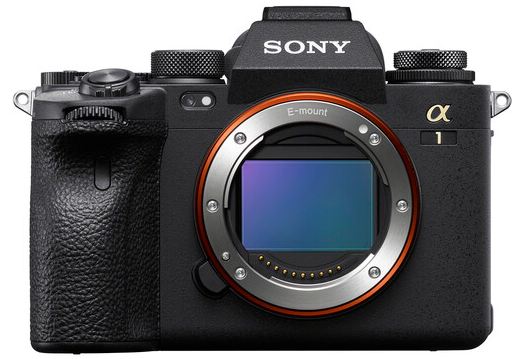
Sony finally announced the new flagship FF Mirrorless camera. The newly announced Sony A1 camera features a brand new 50MP Stacked BSI CMOS sensor and an ISO range from 100 – 32000 and an expandable ISO range up to 50 – 102400. Sony A1 camera sensor is fabricated with 759 Hybrid AF points and updated and improved AF algorithm for better object tracking in still and video mode.
Also, see –
For the first time in a Sony camera, we have real-time bird eye AF tracking mode for wildlife photographers. With the help of a new stacked CMPOS sensor and Dual BionzXRimage processor, the Sony A1 is able to shoot images up to 30FPS with full-time AF/AE ON all the time. Despite having twice as many pixels as the a9, the a1 promises to have a 1.5x less rolling shutter. This allows flash sync at up to 1/200 sec with the electronic shutter or 1/400 sec using the mechanical shutter.
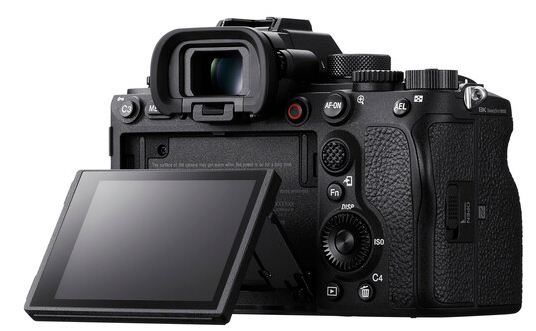
The Sony A1 can shoot 8K video at up to 30p using its full width, the camera uses oversampling method during recording 8k video and the video file is made from 8.6K RAW video file, downsizing it to 8K to provide improved resolution. You can internally record the 8K in up to 10-bit 4:2:0 using the XAVC HS format and 16-bit Raw video output over HDMI. With the new HEatsink system as we have seen in the A7S III, the Sony A1 camera can shoot 8K for up to 30 minutes, if the temperature warnings are set to their most tolerant setting. The camera’s in-body image stabilization system is rated at 5.5EV for stable stills and Video.

It will cost around $6500 / €7,300 / £6,500 and will be available in March. It uses the same VG-C4EM two-battery accessory grip as the a7R IV, a7S III and a9 II.
Sony A1 Press Release
Groundbreaking Sony Alpha 1 Camera Marks a New Era in Professional Imaging
The Alpha 1 Delivers an Unprecedented Combination of Resolution, Speed and Video Performance, Empowering Professionals with a New High-Resolution 50.1-megapixel Full-frame Image Sensor, High-speed Shooting at up to 30 Frames per Second, 8K 30p Video and More
- New 50.1-megapixel (approx., effective) full-frame stacked Exmor RS™ CMOS image sensor in combination with an upgraded BIONZ XR™ imaging processing engine with eight times more processing power[i]
- Blackout- free continuous shooting at up to 30 frames per second[ii]
- Fast sensor readout enables up to 120 AF/AE calculations per second[iii], double the speed of the Alpha 9 II, even during 30fps continuous shooting
- Bright and large 0.64-type 9.44 million-dot (approx.) OLED Quad-XGA electronic viewfinder with the world’s first[iv] refresh rate of 240 fps
- Silent, vibration-free electronic shutter
- World’s first[v] anti-flicker shooting with both mechanical and electronic shutter
- Electronic shutter flash sync[vi] up to 1/200 sec. for the first time in the Alpha™ series
- World’s fastest[v] mechanical shutter flash sync up to 1/400 sec.
- 8K 30p[vii] 10-bit 4:2:0 XAVC HS video recording with 8.6K oversampling for extraordinary detail and resolution, in addition to 4K 120p[viii] 10-bit 4:2:2 movie shooting capabilities
- Wide dynamic range of 15 stops for stillsand 15+ stops for video[x]
- Improved Real-time Eye AF (autofocus) for humans and animals, and new Real-time Eye AF for birds, as well as Real-time Tracking that automatically maintains accurate focus
- 5-axis optical in-body image stabilization for a 5.5-step shutter speed advantage
- S-Cinetone color matrix as seen in FX9 and FX6 to deliver expressive cinematic look
- Professional workflow support with the industry’s fastest built-in Wi-Fi, SuperSpeed USB 10Gbps, 1000BASE-T Ethernet and more
SAN DIEGO, CA – January 26, 2021 – Sony Electronics, a global leader in imaging sensor technology and digital imaging, has announced the arrival of the groundbreaking new full-frame mirrorless Alpha 1 camera – asserting their commitment to leading the industry with a stunning combination of innovative new features.
The most technologically advanced, innovative camera that Sony has ever released, the Alpha 1 combines high-resolution and high-speed performance at a level that has never been accomplished in the world of digital cameras. With a brand new 50.1-megapixel full-frame stacked Exmor RS™ image sensor, up to 120 AF/AE calculations per second, 8K 30p 10-bit 4:2:0 video and much more, the Alpha 1 will allow creators to capture what they’ve never been able to before.
“We are always listening to our customers, challenging the industry to bring new innovation to the market that goes far beyond their expectations.” said Neal Manowitz, deputy president for Imaging Products and Solutions Americas at Sony Electronics. “Alpha 1 breaks through all existing boundaries, setting a new bar for what creators can accomplish with a single camera. What excites us the most – more than the extensive product feature – is Alpha 1’s ability to capture that which has never been captured before. This camera unlocks a new world of creative possibilities, making the previously impossible now possible.”
The newly developed image sensor is built with integral memory and paired with an upgraded BIONZ XR imaging processing engine, making it capable of shooting 50.1-megapixel images continuously at an astounding 30fps with up to 120 AF/AE calculations per second. The Alpha 1’s shooting capabilities are further enhanced by a 9.44 million dot OLED Quad-XGA electronic viewfinder, with a refresh rate of up to 240 fps, ensuring no black out. Additionally, for the first time in an Alpha series camera, 8K 30p 10-bit 4:2:0 video is available. The Alpha 1 is also capable of 4K 120p / 60p 10-bit 4:2:2 recording and includes S-Cinetone color. The Alpha 1 is also packed with features that support field professionals with faster workflow, including 3.5 times faster wireless FTP transfer speed and more.
Unprecedented Resolution and Speed
Continuous Shooting at Up to 30 Frames Per Second
The Alpha 1 captures moments that would otherwise be lost thanks to its high-speed performance, providing any photographer the speed they require to capture fast-moving objects. High speed readout from the 50.1-megapixel image sensor and a large buffer memory make it possible to shoot up to 155 full-frame compressed RAW images or 165 full-frame JPEG images at up to 30 frames per second with the electronic shutter while maintaining full AF and AE tracking performance.
At an astonishing calculation speed of up to 120 AF/AE per second, the Alpha 1 can maintain focus with high accuracy even for fast moving subjects. It can automatically adjust exposure, even with sudden changes in brightness, with an AE response latency as low as 0.033 seconds[ii].
Advanced Electronic Viewfinder with the World’s Firstiv Refresh Rate of 240 fps
Complimenting the camera’s ability to capture images at an unprecedented speed, the Alpha 1 viewfinder features the world’s first[iv] 240 fps refresh ratexiv, for a super-smooth display. The viewfinder does not black out when an exposure is made to offer an uninterrupted view and allow for seamless framing and tracking, even during continuous shooting. The 9.44 million-dot (approx.), 0.64 type Quad-XGA high-definition OLED display and refined optics deliver the highest resolution in its classiv. It also offers 0.90 viewfinder magnification, a 41° diagonal FOV, and a 25mm-high eyepoint for clear, low distortion viewing from corner to corner.
Advanced Autofocus
Sony continues to push the boundaries of autofocus technology with the introduction of the Alpha 1, which can easily track complex, fast-moving subjects with high precision. The camera features 759 phase detection points in a high-density focal plane phase-detection AF system cover approximately 92% of the image area – ensuring accuracy and unfailing focus in environments where focusing might otherwise be difficult.
Sony’s advanced Real-time Eye AF improves detection performance by 30% over the previous system[i], thanks to the powerful image processing engine, BIONZ XR. It ensures accurate, reliable detection, even when the subject’s face looks away. In addition to improved Real-time Eye AF for humans and animals, the Alpha 1 employs high-level subject recognition technology to provide Real-time Eye AF for birds, a first in an Alpha series camera. Optimized algorithms ensure that tracking is maintained even if a sitting bird suddenly takes flight, or the framing suddenly changes.
The Alpha 1 also features AI-based Real-time Tracking that automatically maintains accurate focus. A subject recognition algorithm uses color, pattern (brightness), and subject distance (depth) data to process spatial information in real time at high speed.
Silent, Vibration-free Electronic Shutter
High-speed readout from the new image sensor has made it possible to reduce rolling shutter by up to 1.5 times when shooting stills, compared to the Alpha 9 II. It also offers silent anti-flicker continuous shooting with an electronic shutter for the first time[v] in the world. The electronic shutter operates silently, without mechanical noise, and is vibration-free. Stress-free continuous shooting is now possible even when shooting in challenging lighting situations with florescent or other flicker-prone types of artificial lighting. And for the first time in an Alpha camera, electronic shutter flash sync up to 1/200 sec is possible. The advantages of the electronic shutter advantages can now come to life even when using flash for broadly expanded shooting versatility.
Dual Driven Shutter System for 1/400 Flash Sync
The Alpha 1 boasts the world’s fastest flash sync speed[v] of 1/400 sec. with mechanical shutter, making it even easier to capture dynamic action. In addition to a carbon fiber shutter curtain, the Alpha 1 features the newly developed dual driven shutter system utilizing spring and electromagnetic drive actuator, offering high durability and lightness at the same time.
High Resolution Shooting Enhancements
Even with this sensor’s high pixel count, the Alpha 1 offers high sensitivity with low noise, plus 15+ stops of dynamic range for video and 15 stops for stills, for smooth, natural gradations from shadows to highlights thanks to its cutting-edge processing system, throughout a wide ISO sensitivity range of 100-32,000 (expandable to 50-102,400, when shooting stills).
Additionally, the new camera features an evolved Pixel Shift Multi Shooting mode that composites up to 16 full-resolution images. In this mode, the camera precisely shifts the sensor in one pixel or half-pixel increments to capture 16 separate pixel-shifted images containing a total of 796.2 million pixels of data, which are then composited into a 199 million pixel (17,280 x 11,520 pixels) image using Sony’s Imaging Edge™ desktop application. With a flash sync of up to 1/200 sec. in this mode, it is ideal for photographing architecture, art or any other still life subject with a level of detail and color accuracy that is simply stunning.
Professional Video Quality
8K High-resolution Movie Shooting
For the first time in an Alpha camera, the Alpha 1 offers 8K 30p 10-bit 4:2:0 XAVC HS recording with 8.6K oversampling for extraordinary resolution. Combined with Sony’s acclaimed autofocus technology, gradation and color reproduction performance, the Alpha 1 will help the user realize their creative vision with the finest detail. It’s 8K footage can also be used for flexible 4K editing during post-production.
Supporting Various Video Formats for Professionals
The Alpha 1 offers in-camera 4K recording at up to 120 frames per second[viii] which allows the user to shoot up to 5X slow-motion video. In addition to supporting 10-bit 4:2:2 recording, this feature can be used with efficient Long GOP inter-frame compression or high-quality Intra (All-I) intra-frame compression.
The Alpha 1 features S-Cinetone, the same color matrix that produces the highly regarded FX9 and FX6 color and skin tones. It delivers natural mid-tones, plus soft colors and gorgeous highlights to meet a growing need for more expressive depth. The S-Log3 gamma curve makes it possible to achieve 15+ stops of dynamic range, while the S-Gamut3 and S-Gamut3.Cine color gamut settings make it easy to match Alpha 1 footage with video shot on VENICE cinema camera, FX9 and other professional cinema cameras.
Heat-dissipating Structure
A unique heat dissipating structure keeps image sensor and image processing engine temperatures within their normal operating range, preventing overheating while maintaining compact body dimensions. This makes it possible to record 8K/30p video continuously for approximately 30 minutes[xxiv].
Supporting Hand-held Shooting
A high-precision stabilization unit and gyro sensors, plus optimized image stabilization algorithms, achieve up to a 5.5-step shutter speed advantage, maximizing the quality of the high-resolution images derived from the camera’s 50.1-megapixel sensor. The Alpha 1 also features an Active Mode[xxv] that offers outstanding stabilization for handheld movie shooting. When using Sony’s desktop applications Catalyst Browse or Catalyst Prepare[xxvi] for post-production, an accurate image stabilization function is available which utilizes metadata generated by camera’s built-in gyro.
Other features that the Alpha 1 offers include; 16-bit RAW output to an external recorder[xxviii] via HDMI for maximum post-production flexibility, a digital audio interface has been added to the camera’s Multi Interface (MI) Shoe for clearer audio recordings from a compatible Sony external microphone, 5.8K oversampled full pixel readout without pixel binning for high-resolution 4K movies in Super 35mm mode and more.
Enhanced Workflow with Network Technologies including Connectivity to 5G Compatible Devices
The Alpha 1 has been designed and configured to support photo and video journalists and sports shooters who need to deliver stills or movies as quickly as possible with advanced connectivity options. It offers several features for fast, reliable file transfers. Industry’s fastest[xiii] built-in wireless LAN allows communication on 2.4 GHz and 5 GHz[xxix] bands with dual antennas to ensure reliable communications. 5 GHz includes 2×2 MIMO support (IEEE 802.11a/b/g/n/ac) offering 3.5 times faster wireless FTP transfer speed than the Alpha 9 II – a notable advantage for news and sports shooters who need to deliver with reliable speed. There is also a provided USB Type-C® connector to support fast data transfer when connected to a 5G mmWave compatible device such as Sony’s Xperia PRO and makes high-speed PC Remote (tethered) data transfer available for smooth handling of large image files. The Alpha 1 also has a built-in 1000BASE-T LAN connector for high-speed, stable data transfers, including remote shooting. FTPS (File Transfer over SSL/TLS) is supported, allowing SSL or TLS encryption for increased data security.
In addition to compressed and uncompressed RAW, the Alpha 1 includes efficient lossless compression with no quality degradation, Lossless Compressed RAW. There is also a new “Light” JPEG/HEIF image quality setting that results in smaller files than the “Standard” setting, allowing faster deliver for news and sports photographers who depend on speed. Along with a versatile range of RAW and JPEG formats, the Alpha 1 includes the HEIF (High Efficiency Image File) format for smooth 10-bit gradations that provide more realistic reproduction of skies and portrait subjects where subtle, natural gradation is essential. Images shot on the Alpha 1 can be trimmed in-camera to a desired aspect ratio, size, or position for versatile usage.
The Alpha 1 is also compatible with a variety of apps, add-ons and tools. With Imaging Edge Mobile and Imaging Edge Desktop, professionals can easily transfer RAW files and files that use lossless compression and remotely control Touch Tracking and Touch Focus for convenient AF operation. The Transfer & Tagging add-on (Ver. 1.3 or later) can automatically covert voice memos attached to image files to text captions or transfer the files to an FTP server from a mobile device. Desktop applications Catalyst Browse/Catalyst Prepare allow professionals to browse and manage video clips shot by Sony’s camera. In addition, the Remote Camera Tool can remotely change camera settings and shoot from a computer connected via LAN cable and feature a number of refinements for the Alpha 1: faster transfer, touch response, dual slot and HEIF support, and more.
Reliable and Easy Operability
Professional users need more than just refined features and performance. They also need the reliability and durability demanded of any professional tool. The Alpha 1 has two media slots that both support UHS-I and UHS-II SDXC/SDHC cards, as well as new CFexpress Type A cards for higher overall capacity and faster read/write speeds. It also features a durable magnesium alloy chassis, long battery life with the Z-battery which can be extended using the optional VG-C4EM Vertical Grip (sold separately), an improved dust removal feature, shutter close function on power-off to protect image sensor, plus dust and moisture resistance that maximizes reliability in challenging environments. It includes a durable, reliable HDMI Type-A connector, and USB PD (Power Delivery) support, allowing higher power to be supplied from an external source so that users can record for extended periods with minimal internal battery usage.
A revised menu structure provides easier navigation, and touch-responsive menu operation offers fast, more intuitive control with Touch Focus and Touch Tracking on its 3.0 type 1.44 million-dot (approx.) LCD monitor. For easy customization, a subset of the camera’s shooting settings now changes according to the selected shooting mode, making it easier than ever to use different aperture, shutter speed and other settings for shooting stills and movies.
The Alpha 1 Full-frame Interchangeable-Lens Camera will be available in March 2021 for approximately $6,500 USD and $8,500 CAD. It will be sold at a variety of Sony’s authorized dealers throughout North America.
By admin, on July 28th, 2020

Sony finally announced the long-rumored Sony A7S III camera, the camera features a redesigned 12MP BSI CMOS Sensor. The camera also features the latest generation of the BionZ XR image processor. The camera features no overheating issue even when used for 1 hour at 4k 60p as claimed by the camera maker.
Sony A7S III camera features a native ISO range of 80-102400, which can expand to 40-409600. So, specifically for low-light video work, the camera will work like a charm. Sony claims that the sensor is brand new and features 2X readout speed compared to the older gen. of the Sony A7S II sensor which in turn reduces the rolling shutter effect of the sensor.
Sony A7S III Major Features
- 12MP BSI CMOS sensor
- Bionz XR processor
- On-sensor phase detection
- 759-Point Fast Hybrid AF
- ISO 80-102,400 (expandable to 40-409,600)
- 9.44M dot EVF with 0.91x magnification
- 4K video at up to 120p, 60p for ‘at least an hour’
- 16-bit Raw video output at up to 60p
- 10-bit 4:2:2 internal capture (in codecs including H.265 and All-I H.264)
- Fully articulating LCD
- 5-axis in-body stabilization with Steady shot active mode
- Twin card slots that each accept either SD or CFexpress Type A
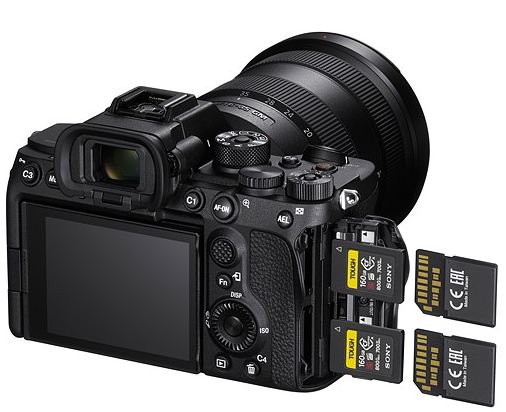
Finally, Sony added a Var-angle display screen to its Fullframe cameras after introducing it in Sony ZV1 camera.The menu system has been refined and is easier to navigate. The camera has a full-size HDMI port along with headphones and mic sockets, dual-band Wi-Fi, and support for USB Power Delivery. It has twin dual-format memory card slots, both of which can handle an SD or CFexpress Type A card.
The a7S III will be available in late September for $3499.
Get the Sony A7S III Camera from B&H Store
1. Sony A7S III Press Release
Highly Anticipated Sony Alpha 7S III Combines Supreme Imaging Performance with Classic “S” Series Sensitivity
New Alpha 7S III Empowers Creators with 4K 120P[i] Video, 10-bit 4:2:2 Recording, 15+ Stop Dynamic Range[ii], Improved AF Performance and More
- Newly developed BIONZ XR™ image processing engine with eight times more processing power[iii] and a brand new 12.1-megapixel (, effective) back-illuminated full-frame Exmor R™ CMOS image sensor, significantly reduced rolling shutter effect[iv]
- Ultra-high sensitivity with ISO range expandable from 40 – 409,600[v], and improved image quality by approximately 1 stop noise reduction[iv] in the middle and high sensitivity ranges
- Video recording capabilities include 4K 120p[i], 10 bit 4:2:2 color depth, All-Intra recording, XAVC HS format with H.265 codec and more
- 15+ stop dynamic range for movies[ii]
- 4K 60p 16-bit RAW video HDMI output for the first time in the Alpha™ series
- Fast Hybrid AF system with 759 point phase-detection[vi] AF sensors covering 92% of image sensor
- Enhanced Real-time Eye AF for movie recording[vii] and still image recording
- New heat dissipating mechanism and dual slot relay recording enables over one-hour long 4K 60p 10-bit 4:2:2 movie shooting[viii]
- 5-axis optical in-body image stabilization supports handheld movie shooting, with added Active Mode [ix] to support especially difficult handheld movie shooting
- World’s brightest[x] and largest[x] new 0.64-type 9.44 million-dot OLED electronic viewfinder
- Side Opening variable angle LCD screen enhances shooting flexibility
- Completely redesigned menu system with touch screen interface and touch operation
- High-speed continuous still image shooting at up to 10fps[xi] for more than 1,000 consecutive uncompressed RAW images[xii] with full AF / AE tracking
- Dual CFexpress Type A card slots that enable high speed data processing while keeping the compact size
SAN DIEGO – July 28, 2020 –Today, Sony Electronics Inc. announced the long-awaited addition to its acclaimed Alpha 7S full-frame mirrorless camera series — the Alpha 7S III (model ILCE-7SM3).
Featuring a brand new 12.1MP (approx., effective) back-illuminated full-frame image sensor with ultra-high sensitivity and 15+ stop wide dynamic range[ii], a host of impressive video recording capabilities including 4K 120p[i] and 10-bit 4:2:2 color depth, a new heat dissipating mechanism, dual slot relay recording enabling over one-hour of 4K 60p movie shooting[viii], a new autofocus system, and touch screen interface and side flip LCD screen, the new Alpha 7S III will become the ultimate creative tool for video professionals and all types of hybrid still/video shooters.
“The Alpha 7S III is the ultimate representation of Sony’s passion to solve our customers’ pain points,”, said Neal Manowitz, deputy president for Imaging Products and Solutions Americas at Sony Electronics. “We are always listening to our customers’ feedback, pushing hard to deliver innovation that goes far beyond their expectations. There is no better example than this new camera. Combining classic S series sensitivity with a feature set, performance level and user experience that is simply unmatched in the market today — at any price level — the Alpha 7S III opens up a new world of possibilities for today’s creators.”
The system architecture for the new Alpha 7S III has been completely redesigned to deliver exceptional video and still shooting performance. The new 35mm full-frame 12.1MP (approx., effective) back-illuminated Exmor R™ CMOS image sensor reduces rolling shutter by up to three times[iv] and utilizes a variety of advanced light-gathering techniques to ensure high-sensitivity with low noise, allowing users to shoot in low-light situations without needing large-scale lighting setups. In addition to improved image quality, this new image sensor includes a focal plane phase-detection AF system for the first time in an S-series camera.
To compliment the new sensor, the Alpha 7S III also includes a new BIONZ XR™ image processing engine that provides up to eight times more processing power[iii], minimizes processing latency, and enables many of the hallmark still and imaging features of the camera. The new system also includes the world’s brightest[x] and largest[x] 9.44 million-dot (approx.) OLED electronic eye-level viewfinder and is the world’s first camera[x] with dual CFexpress Type A card slots, enabling high-speed data transfer in a compact size.
Professional Video Workflow Solutions
The Alpha 7S III offers in-camera 4K recording up to 120 frames per secondi, 10-bit depth and 4:2:2 color sampling, producing stunning video recording. The new camera offers a more flexible and efficient post-production workflow with a variety of advanced movie recording modes such as All-Intra[xiii] and MPEG-H HEVC/H.265 coding (XAVC HS™)[xiv]. The Alpha 7S III makes it easy to integrate video recordings with other professional camcorders by providing three color gamut settings S-Gamut, S-Gamut3, and S-Gamut3.Cine, allowing users to easily match footage shot on the Alpha 7S III with footage shot on the professional camcorders simplifying multi-camera post-production workflow. In addition to S-Log3 gamma curves, the Alpha 7S III supports an HLG (Hybrid Log-Gamma) picture profile with minimum post-production. The Alpha 7S III also allows up to 4K 60p 16-bit RAW output[xv] to an external recorder via HDMI Type-A[xvi] connector, offering additional post-production flexibility.
Improved Image Quality
The new CMOS image sensor and BIONZ XR™ image processing engine in the Alpha 7S III delivers legendary S-series sensitivity with significantly enhanced color reproduction and texture renderings for improved overall image quality. The base ISO has been lowered to 80, resulting in a normal range of 80-102,400 (expandable to 80-409,600 for video and 40-409,600 for stills) to provide more flexible ISO plus wide dynamic range with low noise at all settings. It offers improved image quality by approximately 1 stop of noise reduction[iv] in the middle and high sensitivity ranges.
The colors and textures of foliage, human skin, and more are ideally and consistently reproduced without dependence on light sources. Gradation rendering has also been refined for better looking skin tones and highlight roll-off in portraits. It also improves AWB (Auto White Balance) performance with a new “Visible light + IR Sensor” that helps to achieve more precise white balance under artificial lighting, including fluorescent and LED lights.
Versatile Operability
Advanced Autofocus Performance for Hybrid use
For the first time in an Alpha 7S series camera, the Alpha 7S III offers Fast Hybrid AF by combining phase-detection and contrast-detection AF, giving it the ability to track subjects over a wide area with outstanding speed, precision and smoothness, even when using a narrow depth of field. Fine focus expression is possible with Sony’s E-mount lenses.
For environments with a lot of movement, Real-time Tracking and Real-time Eye AF are available to maintain constant focus on the intended subject. Sony’s advanced Real-time Eye AF improves detection performance by 30% over the previous system[iii], thanks to the new image processing engine. It ensures accurate, reliable detection, even when the subject’s face looks away. Real-time Tracking is initiated simply by touching the subject on the screen. Real-time Eye AF is automatically initiated when an eye is detected.
Flexible Autofocus Settings for Movie Shooting
Based on customer feedback, the camera includes several AF features for professional users including AF Transition Speed in seven settings, to easily create rack-focus transitions, and five AF Subject Shift Sensitivity settings, which allows the user to customize how easily AF will switch or stay with the locked-on subject. Touch Tracking allows user to not only initiate Real-time Tracking, but also compose and shoot while using a gimbal or while shooting solo. It’s now possible to Touch Focus during manual focus mode on the LCD screen or remotely from the Imaging Edge Mobile application[xvii].
New Heat-dissipating Structure
The Alpha 7S III’s design has been updated to ensure effective heat dissipation and minimizes overheating — even during extended continuous recording sessions at 4K 60p 10-bit 4:2:2 video lasting an hour or more[viii]. A newly developed unique heat dissipating structure keeps the image sensor and image processing engine temperatures within their normal operating ranges, preventing overheating while maintaining compact body dimensions. The new heat-dissipating structure requires no fan or cabinet vents allowing Alpha 7S III to maintain dust and moisture resistance[xviii].
Movie Assist Functions
For video on-the-go, the Alpha 7S III is the first Alpha series camera to include Active Modeix with 5-axis optical in-body image stabilization to support especially difficult handheld movie shooting. It is also the first Alpha series E-mount body to feature a side-opening vari-angle rear screen, perfect for gimbal-mounted shots, complicated angles, handheld operation and more. The screen rotates sideways, up and down, and features a 3.0 type 1.44 million-dot (approx.) touch panel LCD monitor, for optimal visibility even in bright outdoor environments.
In addition, the Alpha 7S III provides a selection of new Creative Look with 10 presets that can be used for both photo and video shoots, making it easy to create interesting moods right in the camera to be used as is or customized by the user.
A digital audio interface has been added to the camera’s Multi-Interface (MI) Shoe for clearer audio recordings from a compatible Sony external microphone. Used with Sony’s XLR-K3M XLR Adaptor Kit, the Alpha 7S III provides 4-channel 24-bit digital audio recording capability in an Alpha series camera for the first time. Like other MI shoe accessories, no cables or batteries are required, providing unrestrained freedom for Alpha system moviemaking.
Additional movie assist functions include a redesigned monitor display with a bold, clearly visible red frame that makes it clear when recording is in progress even when mounted on a rig or gimbal, custom zoom settings, adjustable white balance while recording, display rotation, interval recording, still extraction from movies and more.
Outstanding Still Image Photography
The Alpha 7S III includes a fast Hybrid AF system with 759 phase-detection AF points covering 92% of the image sensor. The camera can also achieve high AF precision to accurately and reliably focus in light down to EV-6[xix], where subjects are difficult to see clearly even with the naked eye. Users can continuously shoot more than 1,000 uncompressed RAW[xii] images at up to 10fps, or up to 8fps in live view mode, with either the mechanical or electronic shutter.
The Alpha 7S III also includes the world’s first[x] 9.44 million-dot (approx.), 0.64 type Quad-XGA electronic viewfinder with a high-definition OLED display and refined. The Alpha 7S III viewfinder offers a 0.90x viewfinder magnification[xx], 41° diagonal field of view, 25mm high eyepoint for clear, low-distortion corner to corner viewing. It is also dust, fog and moisture resistant[xviii], extremely responsive, and has switchable modes for different subject types. Every aspect of the Alpha 7S III viewfinder has been designed and refined for a professional workflow.
For the first time in one of Sony’s digital cameras, the Alpha 7S III includes HEIF (High Efficiency Image File Format) allowing for smooth 10-bit gradations and advanced compression technology to maintain image quality while significantly reducing file size and saving storage space. HEIF stills shot in this mode can be played back on a compatible Sony HDR (HLG) TV via a direct HDMI Type-A connection from the Alpha 7S III, delivering true-to-life dynamic range[xxi].
Versatile Design Made for the Pros
CFexpress Type A for High-speed Data Transfer
In another world’s firstx, the Alpha 7S III features two CFexpress Type A compatible media slots which also support UHS-I and UHS-II SDXC/SDHC cards, enabling high write-and-read speeds while keeping the camera body compact in size. CFexpress Type A cards are ideally suited to high-speed continuous RAW still image shooting as well as 4K 120pi movie recording at high bit rates[xxii], providing next-generation write speeds that can quickly clear the buffers of cameras that generate high volumes of still image and movie data. High-speed data transfer to a PC is possible at about 1.7 times faster[xxiii] than that of SD card. The dual slots can be set to relay mode for extended continuous recording of even the highest bit rate data as well as simultaneous recording and sort by format type recording.
Revised Menu System with Enhanced Touch Screen
The Alpha 7S III also features a revised menu structure for easier navigation and touch-responsive menu operation for faster, more intuitive control. For creators who shoot both stills and movies, separate settings can now be stored for stills and movie shooting for quick transition between the two.
High Reliability Gives Creators New Freedom
Professional users need more than just refined features and performance. They also need the reliability and durability demanded of any professional tool. The Alpha 7S III features a redesigned grip for greater comfort and a secure hold, an improved dust removal feature, plus dust and moisture resistance[xviii] that maximizes reliability in challenging environments. It includes a durable, reliable HDMI Type-A connector, and is the first Alpha series camera to support USB PD (Power Delivery), allowing higher power to be supplied from an external source so that users can continue to record for extended periods with minimal internal battery usage.
Advanced Connectivity for Professional Working Environments
The Alpha 7S III has been designed and configured to support photo and video journalists and sports shooters who need to deliver stills or movies as quickly as possible with several advanced connectivity options. The camera supports 5GHz[xxiv]/2.4GHz wireless LAN (IEEE 802.11ac) and offers MIMO (multiple-input and multiple-output) to improve communication quality by using multiple antennas, doubling in speed when compared to the Alpha7R IV. It also carries new USB tethering support[xxv]. When connected to a 5G (5th generation technology standard for cellular networks) compatible device via USB cable, it is possible to use 5G network for fast and stable FTP file transfer[xxvi]. USB to high-speed wired LAN connectivity[xxvii] also offers stable and fast FTP transfer for both movies and stills. A USB Type-C™ connector that supports fast SuperSpeed USB 5Gbps (USB 3.2) data transfer is provided, enabling high-speed PC Remote (tethered) data transfer available for smooth handling of large image files.
Pricing and Availability
The new Alpha 7S III Full-frame Interchangeable Lens Camera will be available in September 2020 for approximately $3,499.99 USD and $4,799.99 CAD. It will be sold at a variety of Sony’s authorized dealers throughout North America.
Exclusive stories and exciting new content shot with the new camera and Sony’s other imaging products can be found at www.alphauniverse.com, a site created to educate and inspire all fans and customers of Sony α – Alpha.
For detailed coverage on the new product on Alpha Universe, please visit this LINK.
The new content will also be posted directly at the Sony Photo Gallery.
2. Sony A7S III Specifications
By admin, on March 20th, 2020
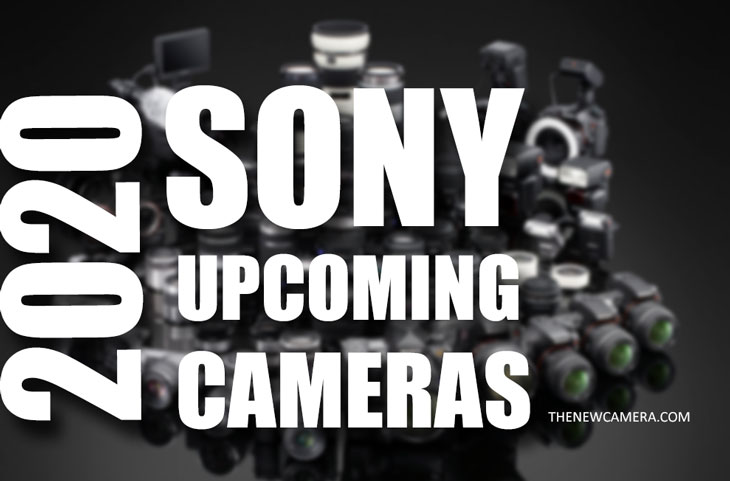
We have created a list of possible Sony cameras that may arrive in the year 2020 based on the recent set of rumors we have. We have seen Canon is now on super-aggressive mode and with the development announcement of Canon EOS R5 camera, they have created huge pressure on Sony.
Now, it’s time for Sony to kick back, take a look at what Sony will be releasing this year to compete against Canon’s latest EOS R5 and R6 announcement.
Sony Upcoming Mirrorless and Compacts camera of 2020
Take a look at the list of to be announced Sony FF and APS-C Mirrorless, and Compact camera coming in 2020.
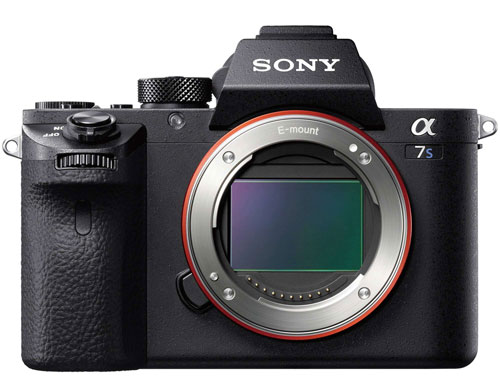
1. Sony A7S III
Sony A7S III is overdue for an announcement. Recent rumors suggest the camera will be using Sony’s recently developed MX 521 CQR sensor. The Sony IMX 521 CQR sensor uses color square pixel array architecture. With the help of CSPA ( color square pixel array) the camera can capture High Sensitivity images up to 15.36MP with very little noise. When used in normal mode the sensor split-up it’s photosites further making it a 61.44MP Quad Bayer Sensor.
Sony A7S III Specification
- 15 MP
- 50-128000
- 5 Stops IBIS
- 10FPS AF/AE Tracking
- 567+425 AF Points
- 4k 24fps,30, 60fps [down-sampled from 4.8k]
- HLG S-log2, S-log3
- Dual UHS-II Card Slot
- 5.76 MP Viewfinder up to 120fps refresh rate
The camera is said to arrive at the Q3/Q4 of 2020 if everything goes on schedule.
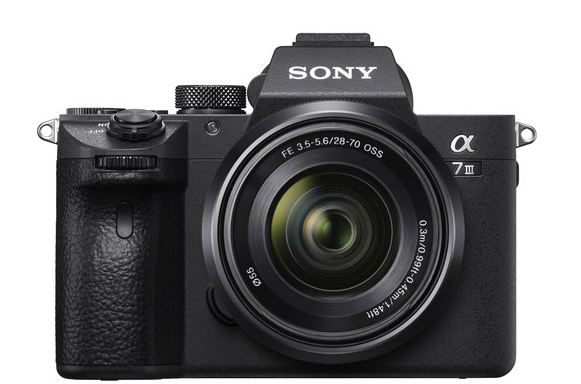
2. Sony A7 IV
Sony A7 IV camera is rumored to arrive this year. As per the rumors we have, the initial prototypes of the camera are already being tested in the wild. We have also published the rumored core specification of the camera a while ago
Sony A7IV Rumored specification
- 24MP Sensor
- Variable OPLF
- 5 Stops IBIS
- 10FPS AF/AE Tracking
- Standard 100-51200
- 693 + 425 AF Points
- pixel shift shooting
- 4k 24fps,30fps [down-sampled from 6k]
- HLG S-log2, S-log3
- Dual UHS-II Card Slot
- 5.76 MP Viewfinder up to 120fps refresh rate
We will update you soon if we get any latest rumors about the Sony A7 IV camera.
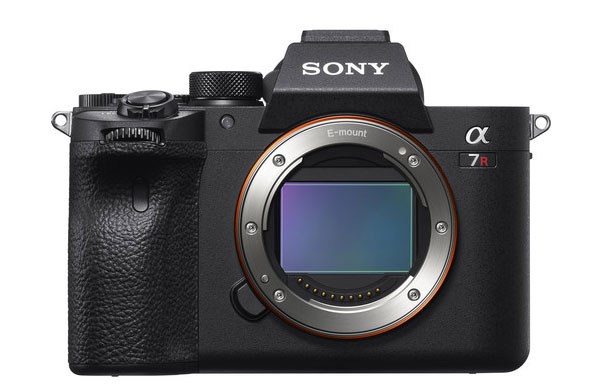
3. Sony A7R V
It’s too early to talk about the Sony A7R V camera since the Sony AR IV is a year old only. But, according to recent rumors surfaced over the web. Due to the arrival of the Canon EOS R5 camera, Sony has accelerated the development speed of the Sony A7R V camera with enhanced video core specification. The Camera is expected to arrive at the end of 2020 or at the very beginning of 2021.
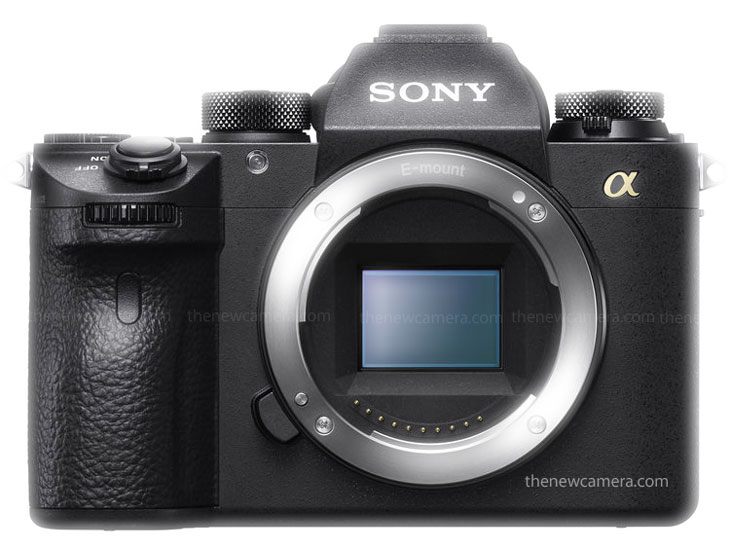
4. Sony A7000 / A6700
Sony A7000 or Sony A6700 camera is also rumored to arrive at the end of 2020 with Sony’s latest IMX671AQR sensor. The sensor features 43MP resolution and is able to record 8K 12bit videos too! Not only that, but the newly developed sensor also has stacked DRAM and up to 16-bit depth for stills images.
Sony A7000 Rumored Specification
- 43MP Sensor
- Bionz X image processor
- 8K Video
- ISO 100-51200 [Standard]
- IBIS 5-stops
These are the initial set of specifications we have for Sony A7000 cameras. Several other early prototypes of the camera do exist in the lab, will update you soon if we get any latest updates. The camera is expected to arrive in the Aug-Sep month of 2020.
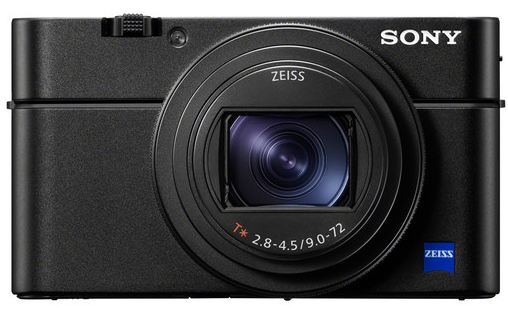
5. Sony RX100 VIII
Sony RX100 VIII announcement was scheduled to arrive this year before Sep 2020. The camera is rumored to carry an enhanced 20MP sensor, new image processor and modest update in core specification.
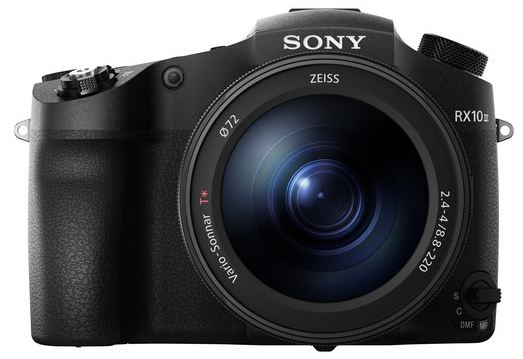
6. Sony RX10 V
Sony RX10 V is also expected to arrive this year. As per the latest rumors, the new model is said to carry over 400 AF points sensor and the new generation of Bionz X image processor. The initial prototypes camera is said to have 6K video capability inside. The announcement time of the camera is said to be 7-8 months from now [end of 2020].
We will update this page as soon as we get any latest information.
By admin, on December 21st, 2019
Photons to photos website published the test results of Sony A7R IV camera. And we have compared the test results with Canon EOS R and Nikon Z7, Let’s have a look what we have found.
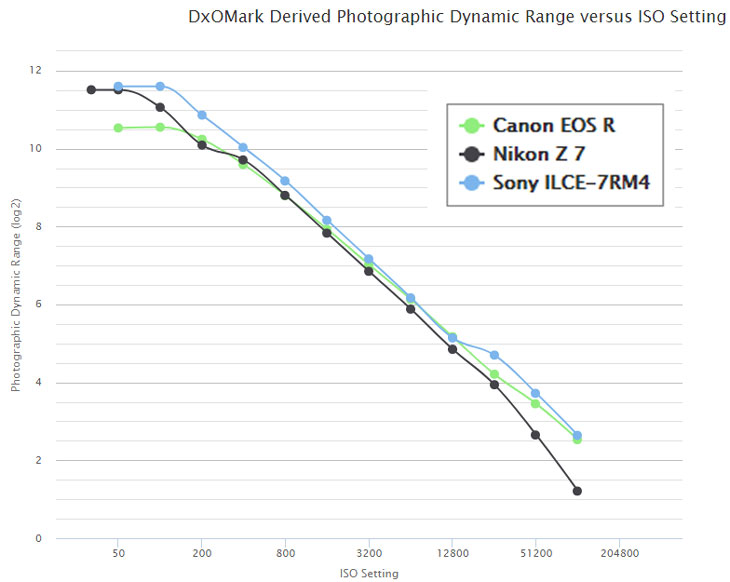
As you can see all the three camera test scores approximately falling in the same zone that’s a good news, more or less you will be getting good results from these cameras.
Sony A7R IV vs Canon EOS R vs Nikon Z7 – Verdict
1. Sony A7R IV – Either low or at High ISO range, Sony A7R IV camera have consistence better Dynamic Range performance.
2. Canon EOS R – isn’t too good at base ISO, Dynamic range of Canon EOS R improves from ISO 400 and matches with Sony A7R IV DR at ISO 3200 till the end.
3. Nikon Z7 – Nikon DR performance is bit zig-zag, Nikon Z7 DR is excellent at base ISO 50, from ISO 100 to ISO 400 Nikon Z7 DR performance is below than Sony A7R IV . From ISO 400 to 12800 the DR range remains in the competitors zone, but falls significantly after ISO 25600 and onward.
Sony A7R IV vs Sony A7R III
We have also compared the dynamic range of the Sony A7R IV camera with Sony A7R III. We came to know that the dynamic range of Sony A7R IV camera looks exactly similar as of Sony A7R III camera..
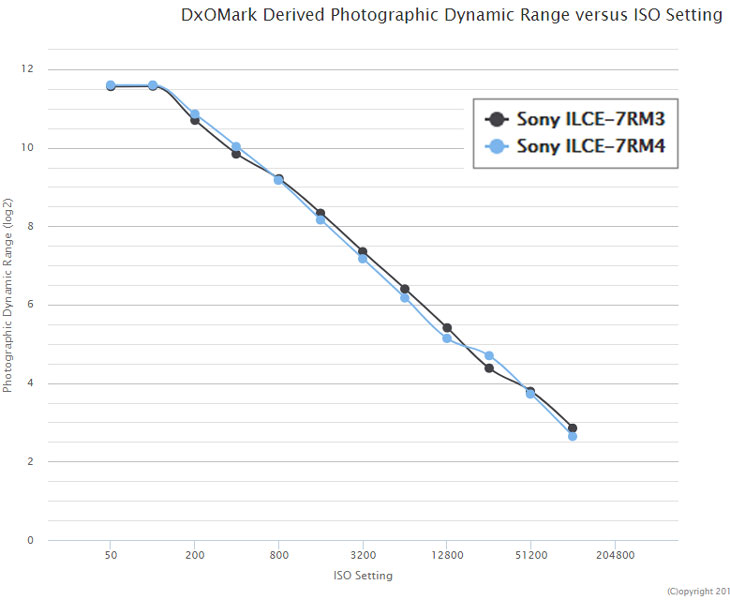
We can confirm you from the test results, despite of increase in the resolution of Sony A7R IV, the dynamic range doesn’t decrease it’s the same that you get in the A7R III which is absolutely a fabulous thing to know.
Sony A7R IV is one of the most popular Sony cameras among professional photographers right now. And not only Sony A7R IV, Sony A7 III is one of the hottest selling full frame mirrorless cameras of 2019.
http://thenewcamera.com/sony-a7s-iii-to-feature-15mp-quad-bayer-sensor/
SUBSCRIBE FOR LIVE UPDATES

Get LIVE RUMORS –> FACEBOOK | TWITTER | INSTAGRAM to to get live news — > –>see more Sony Alpha Rumor
source PP
By admin, on October 3rd, 2019
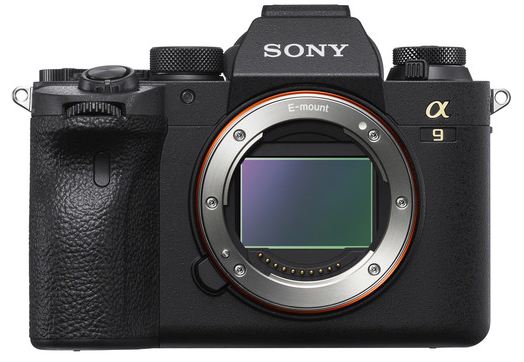
Sony finally announced the Sony A9 II (B&H Store )camera with almost same specification we have in the Sony A9 camera. The only major update we are able to notice in the new camera is the introduction of new Bionzx image processor. Since, the sensor is same as of Sony A9.
So with the introduction of new image processor we are able to enjoy 1-stop better dynamic range, 1-stop low light performance from the predecessor, but more or less we are getting the same sensor we had in the Sony A9 camera.
Sony A9 II Major Specification
- 24.2MP Full-Frame Exmor RS CMOS Sensor
- BIONZ X Image Processor & Front-End LSI
- 693-Point Phase-Detection AF System
- Up to 20 fps Shooting, ISO 100-204800
- UHD 4K30p Video, Real-Time Eye AF
- Blackout-Free Quad-VGA 3.7m-Dot OLED EVF
- 3.0″ 1.44m-Dot Tilting Touchscreen LCD
- 5-Axis SteadyShot INSIDE Stabilization
- Dual UHS-II SD Card Slots, Voice Memos
- 5 GHz Wi-Fi, 1000BASE-T Ethernet
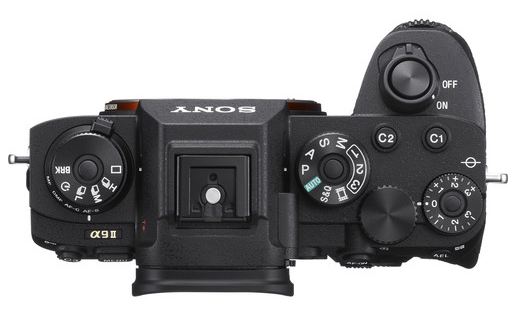
For the first time they have introduced anti flicker mechanical shutter inside the camera, as we have in the Sony A7R IV. With the help of the mechanical shutter now we have 10 frames per second shooting speed, and if you need more speed than you can switch to the electronic shutter mode and you will be getting 20FPS continuous shooting speed from the Sony A9 II camera with full time Autofocus tracking on.
Image stabilization of the camera is improved up 0.5 stops compared to the Sony A9, although the electronic viewfinder of the camera remains same as of its predecessor (3.7Mdot EVF).
Sony also improve the wireless transfer speed of the camera by including a better 5Ghz Wi-Fi mechanism and Gigabyte Ethernet port.
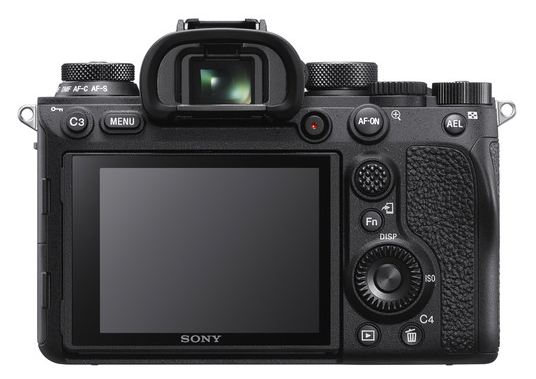
At the end I will say, It was just a incremental update from its predecessor and not a major. From past two announcement Sony is doing incremental updates to their camera if you are going to talk about the Sony S6600 camera or Sony A9 II, all they are sufferer of incremental updates.
Get Sony A9 II camera from B&H Store
Sony Electronics Introduces the Alpha 9 II with Enhanced Connectivity and Workflow for Professional Sports Photographers and Photojournalists
New Alpha 9 II Combines Alpha 9’s Unrivaled Speed with New Functionality to Match the Needs of Professionals
SAN DIEGO — October 3, 2019 — Sony Electronics today announced Alpha 9 II (model ILCE-9M2). The latest model from Sony’s acclaimed line-up of α (Alpha) full-frame interchangeable lens cameras, the new model has been created to support working professionals in the fields of sports photography and photojournalism.
The new Alpha 9 II builds on the impressive legacy of the original Alpha 9, maintaining groundbreaking speed performance, including blackout-free continuous shooting at up to 20 frames per second with Auto Focus and Auto Exposure tracking at 60 calculations per second.
Updates include significantly enhanced connectivity and file delivery, continuous shooting at up to 10 fps with mechanical shutter, and evolved AF performance with newly optimized algorithms, re-designed build to enhance durability and operability.
“The voice of our customers is absolutely critical to Sony – we are always listening,” said Neal Manowitz, deputy president for Imaging Products and Solutions Americas at Sony Electronics. “The Alpha 9 II is the direct result of our work with agency, sports and news photographers since the launch of the original Alpha 9. We have added connectivity and network capabilities that drastically improve the professional workflow, while also making enhancements to design, interface and processing power that complete the user experience. Complemented by our extremely versatile E-mount system – with 55 native lenses introduced at this point including super-telephoto 600mm and 400mm G Master™ series lenses – this new camera is a tool unlike any other for professionals, whether in the field or on the field.”
Raising the Bar for Built-in Connectivity in the Professional’s Workflow
The Alpha 9 II includes a built-in 1000BASE-T Ethernet terminal, enabling gigabit communication for high-speed, stable data transfer operations. Additionally, File Transfer over SSL or TLS encryption (FTPS) is supported for increased data security and PC remote (tether) shooting performance is improved, with decreased release time lag and reduced live view screen delay when using the ‘Remote Camera Tool’ desktop application. The speed of the camera’s built-in wireless LAN functionality has also been increased, adding a stable and fast 5 GHz (IEEE 802.11ac) band, in addition to the 2.4 GHz provided in the Alpha 9. IEEE 802.11a/b/g/n/ac standards are all supported.
Designed to improve the speed of news agencies’ workflow, the Alpha 9 II features a new Voice Memo function that allows spoken information to be attached to images in the form of voice memos that can be replayed when the images are reviewed. The voice data can also be included with images sent to an editor, giving them important information needed for effective editing. Alternatively, a field photographer can also use the ‘Transfer & Tagging add-on’ “Imaging Edge™” application to transfer voice tags with the images to their mobile device and have the voice memos automatically converted to text and added to the JPEG images in the form of IPTC metadata. All of this can be done automatically or manually selected by the photographer.
By combining wireless voice/image transfer and automatic voice-to-text conversion with the ability to auto-transfer images with attached voice memos via FTP, it is possible to shoot and transfer the results to an FTP server without ever having to operate a smartphone. FTP settings within the app can also be sent to a camera via Bluetooth®, allowing for a faster workflow.
The Platinum Standard for Speed and Auto Focus Performance
The new Alpha 9 II shares the same acclaimed 35mm full-frame stacked 24.2 MP Exmor RS™ CMOS image sensor with integral memory as the original Alpha 9, giving it the same unmatched speed performance and outstanding image quality. The new model can shoot continuously and completely silently at 20 fps for up to 361 JPEG images or 239 compressed RAW images, with no viewfinder blackout allowing the photographer to follow the subject and action with no interruption to the EVF during picture taking. For times when mechanical shutter is preferred or required, the new Alpha 9 II has been improved to shoot at up to 10 fps, about 2x the speed of the Alpha 9.
The camera is able to function while continuously calculating Auto Focus and Auto Exposure at up to 60 times per second, with newly optimized AF algorithms that provide notably enhanced AF precision and performance, ensuring that even the most erratic subject motion that is associated with sports are captured with high precision. Also useful for sporting events, the camera now offers an anti-flicker shooting mode that automatically detects and adjusts for the presence of fluorescent or artificial lighting to maximize image quality.
The advanced focusing system in the new Alpha 9 II is far beyond the capabilities of any professional camera. Comprised of 693 focal-plane phase-detection AF points covering approximately 93% of the image area, as well as 425 contrast AF points, the Fast Hybrid Auto Focus system achieves extremely fast and accurate performance, ensuring all fast-moving subjects are accurately captured. Additional notable focusing capabilities include Real-time Eye AF with right eye / left eye selection, Real-time Eye AF for animal augmented with a new algorithm, Real-Time Eye AF for movie, Real-time Tracking, selectable focus frame color, Touch Pad focus point control while using the viewfinder and more. AF can also now continuously track even if continuous shooting is greater than F16, providing further accuracy for shots that require slower shutter speeds.
Refined Build and Operability
- Upgraded BIONZ X™ image processing engine gains maximum benefit from the sensor’s fast readout speed; processor works with front-end LSI to enhance speed in AF/AE detection, image processing, face detection and accuracy, and more
- Upgraded dust and moisture resistant design to meet the needs of professionals in even the most challenging outdoor conditions; stronger sealing provided at all body seams as well as the battery compartment cover and media slot
- Latest developed image-processing algorithm reduces noise in the medium-to-high sensitivity range while improving subjective resolution and image quality
- 5-axis optical in-body image stabilization system that provides a shutter speed advantage of 5.5 steps
- Improved grip configuration for even greater comfort and sure hold; compatible with Sony VG-C4EM Vertical Grip
- Improved button design and feel; increased diameter and feedback of the ‘AF-ON’ button; a refined multi-selector joystick design; an exposure compensation dial lock button; and a redesigned shape and new position for the rear dial
- Redesigned shutter mechanism to suppress even the slightest movement that can cause image blur; tested for durability in excess of 500,000 shutter cycles
- USB Type-C™ connector that supports fast USB 3.2 Gen 1 data transfer
- Dual media slots that are both compatible with UHS-I and UHS-II SD cards, allowing higher overall capacity and faster read/write speeds
- Digital audio interface has been added to the camera’s Multi Interface Shoe™ (MI Shoe), enabling the new ECM-B1M Shotgun Microphone or XLR-K3M XLR Adaptor Kit to be connected directly to the MI Shoe for cleaner, clearer audio recordings
Pricing and Availability
The new Alpha 9 II will be available in November 2019 priced at approximately $4,500 US and $6,000 CA. It will be sold at a variety of Sony’s authorized dealers throughout North America.
By admin, on September 17th, 2019
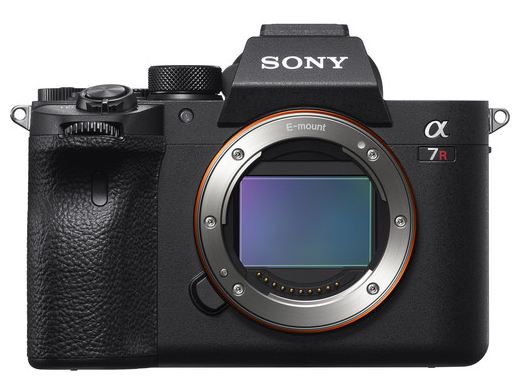
It’s look like Astro Photographers are not happy with the Sony A7R IV camera. While putting camera on longer exposure to capture night sky, due to the presence of strong noise reduction filter the A7RIV wipes out most of the stars from the scene. Take a look what Jim (Jim website) said about the camera
I’m not going to bury the lead here: the Sony a7RIV eats stars just about like the a7RIII does…except that the new behavior starts at 3.2 seconds instead of 4 seconds.
Sony should create a dedicated Star capture mode, and star trail for their camera like Olympus did years ago.
Also see – Sony A7R IV High ISO Test
Buy Sony A7R IV at Amazon.com | Sony A7R IV from B&H Store
Follow us on our social pages FACEBOOK | TWITTER | INSTAGRAM, If you have time –>see more Sony Alpha Rumor
|
KEEP THIS BLOG ALIVE - Support New Camera Buy Canon Lenses, Buy Music CD or Digital Camera at amazon it helps this site, and you do not pay anything extra, it is just a way to help support this site.

|


























